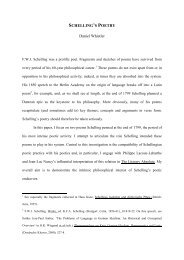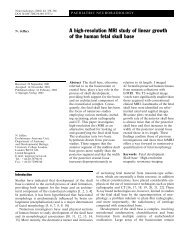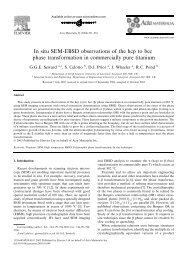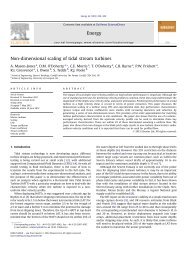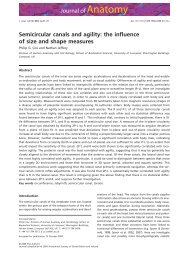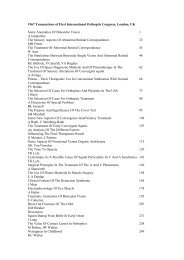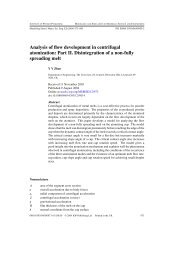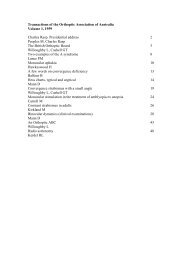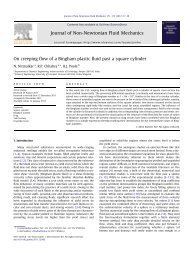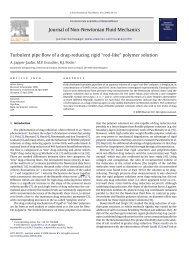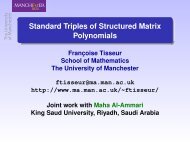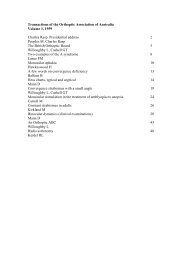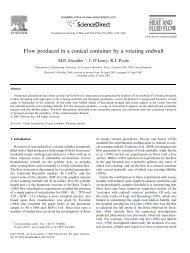Beyond the Pre-Pottery Neolithic B interaction sphere - University of ...
Beyond the Pre-Pottery Neolithic B interaction sphere - University of ...
Beyond the Pre-Pottery Neolithic B interaction sphere - University of ...
You also want an ePaper? Increase the reach of your titles
YUMPU automatically turns print PDFs into web optimized ePapers that Google loves.
100 J World <strong>Pre</strong>hist (2006) 20:87–126<br />
originally proposed by Bar-Yosef and Belfer Cohen (1989) in order to define a broad-scale<br />
explanatory framework that could accommodate a number <strong>of</strong> similarities observed between<br />
different areas in lithic industries, architectural forms, subsistence practices and<br />
symbolic expression. One <strong>of</strong> <strong>the</strong>ir contentions is that during <strong>the</strong> PPNB chronological<br />
horizon exchange networks intensified, thus increasing <strong>the</strong> scope and opportunities for<br />
acculturation and regional cultural integration (Fig. 6)<br />
Importantly, <strong>the</strong> original concept <strong>of</strong> <strong>the</strong> ‘‘PPNB <strong>interaction</strong> <strong>sphere</strong>’’ (Bar-Yosef &<br />
Belfer Cohen, 1989; Bar-Yosef, 2001b) contributed to models <strong>of</strong> acculturation a significant<br />
socio-economic dimension that overall has received little explicit commentary in <strong>the</strong> literature.<br />
By identifying a basic duality in <strong>the</strong> Levantine settlement patterns (with large<br />
village sites occupying <strong>the</strong> ‘‘core area’’ <strong>of</strong> <strong>the</strong> Mediterranean woodland zone and smaller<br />
forager sites being located in <strong>the</strong> arid and semi-arid areas <strong>of</strong> <strong>the</strong> sou<strong>the</strong>rn Levant) it became<br />
possible to establish a genuinely socio-economic <strong>Neolithic</strong> core-periphery system, which<br />
was presumed to have been based on <strong>the</strong> manufacture and trade <strong>of</strong> ‘‘prestige goods’’, such<br />
as obsidian, copper ores, sea shells, bitumen, turquoise, and Dabba marble (Figs. 7). The<br />
directionality <strong>of</strong> such material and cultural exchanges was fur<strong>the</strong>rmore explicitly linked to<br />
<strong>the</strong> assumed superior dynamics <strong>of</strong> <strong>the</strong> sedentary village political economies. The <strong>Neolithic</strong><br />
communities <strong>of</strong> cultivators and herders <strong>of</strong> <strong>the</strong> Levantine Corridor with <strong>the</strong>ir more advanced<br />
technologies and societal institutions were thus taken to represent <strong>the</strong> main forces that set<br />
<strong>the</strong> pace for region-wide social and economic developments such as plant cultivation,<br />
agropastoralism and, later, pottery use. This was seen as particularly relevant in <strong>the</strong><br />
acculturation or colonization <strong>of</strong> less ‘‘developed’’, culturally ‘‘marginal’’ areas.<br />
Fig. 6 PPNB tribal areas in mainland western Asia defined on <strong>the</strong> basis <strong>of</strong> regional material culture<br />
assemblages (redrawn after Bar-Yosef, 2002)<br />
123



